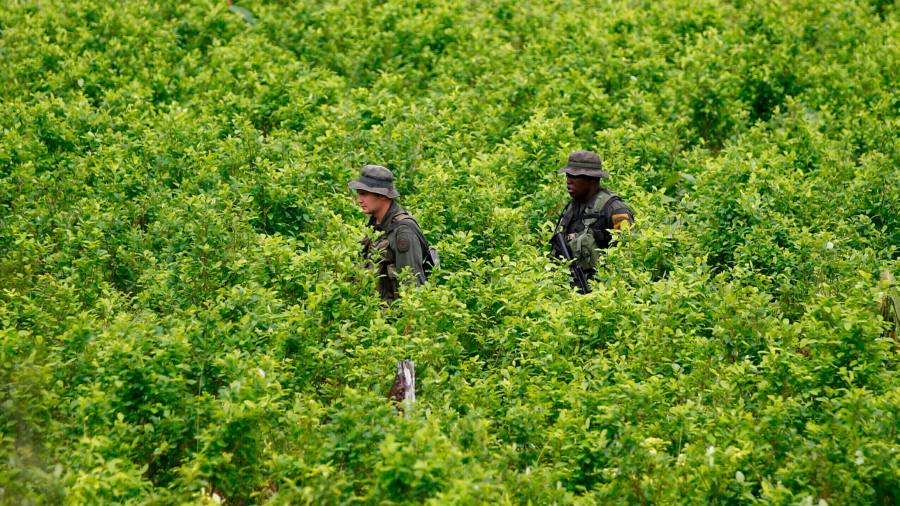Receive free Drug trafficking updates
We’ll send you a myFT Daily Digest email rounding up the latest Drug trafficking news every morning.
Colombian coca crop production last year reached a record high, the UN said in a report on Monday, as the country’s leftist government rethinks its approach to drugs.
Last year 230,000 hectares of land were planted with coca — the main ingredient in cocaine — a 13 per cent increase over 2021, according to the annual report by the United Nations Office on Drugs and Crime (UNODC). The group also found that potential cocaine output surged to its highest level in two decades, rising 24 per cent last year to 1,738 tonnes.
“It is worrying that each year there is an increase in coca crops in the country,” UNODC regional director Candice Welsch said as the report was released on Monday, adding that production boomed in the southern border province of Putumayo.
Gustavo Petro, Colombia’s first leftist leader, has called to reconsider how the country approaches drugs, and described the militarised approach adopted by the US and his predecessors as a failure that criminalises poor farmers instead of addressing cocaine use as a health problem.
“It is time to rebuild hope and not repeat the bloody and ferocious wars, the ill-named ‘war on drugs’, viewing drugs as a military problem and not as a health problem for society,” Petro said at a summit on drug-trafficking in the Colombian city of Cali on Saturday.
Meanwhile, Petro’s administration is pursuing peace deals with drug trafficking organisations and armed groups that have relied on the drug trade to fund their political ambitions.
Coca production in Colombia briefly dipped from 2017 to 2020, as the Revolutionary Armed Forces of Colombia (Farc), a leftist guerrilla group, demobilised.
Colombia’s armed conflict — which was fought between the state, leftist guerrilla groups, rightwing paramilitaries, and drug traffickers — has killed at least 450,000 people in six decades.
Justice minister Néstor Osuna on Monday told reporters that the government’s success on drug policy “should be measured in terms of the reduction of violent crime and the reduction of poverty in those regions where coca is cultivated”.
Amid a glut of cocaine, the price of coca — often a cash crop for farmers — has fallen to roughly 30 per cent of previous levels, according to analysts.
Elizabeth Dickinson, senior analyst for Colombia at the International Crisis Group, said a key question for the Colombian government is whether it can take advantage of the low prices as farmers look to substitute their coca crops: “Or will we miss this golden window of opportunity and set the stage for many more years of violence and conflict that nurtures itself from the drug trade?”
Read the full article here




